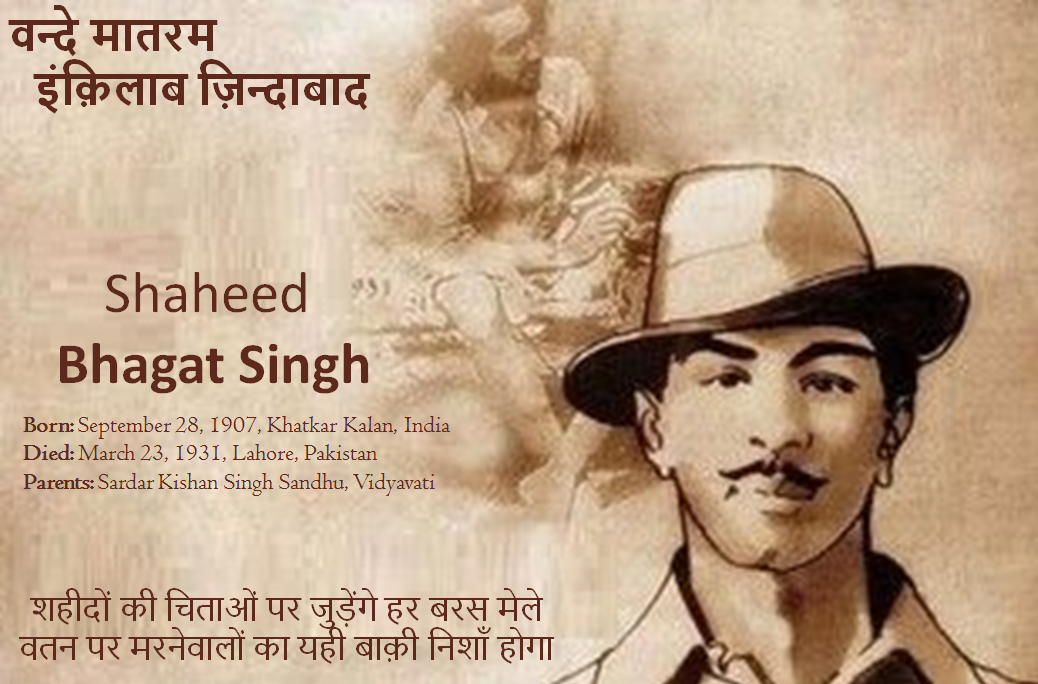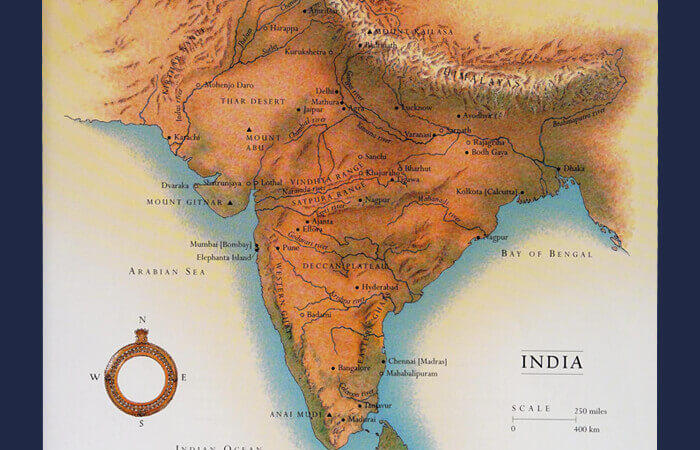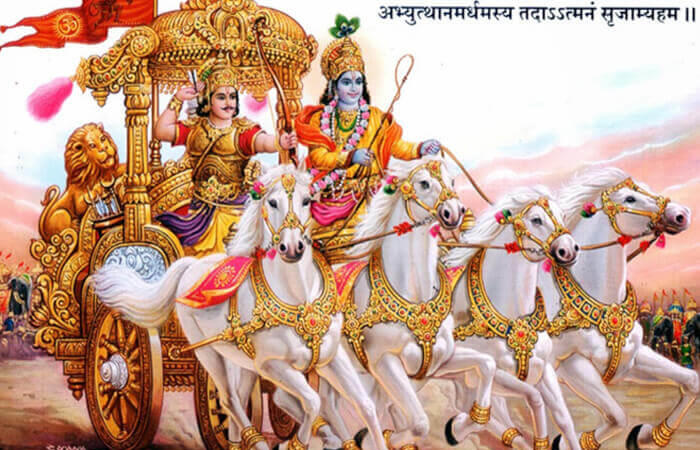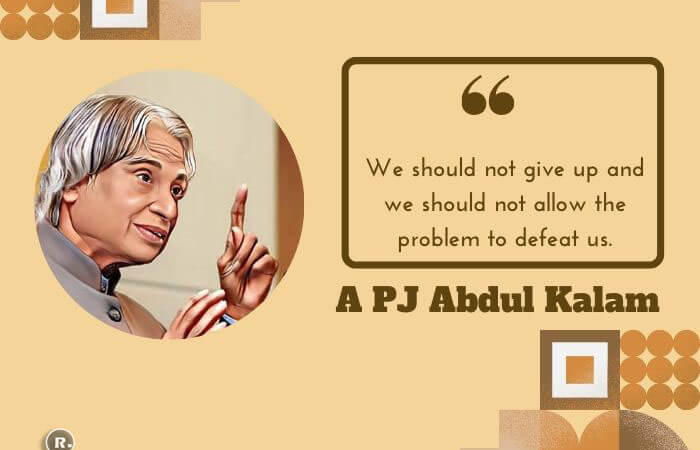Shaheed-e-Azam Bhagat Singh – The great revolutionary of India

Bhagat Singh (Hindi: भगत सि्ह, Punjabi: ਭਗਤ ਸਿਂਘ) (September 28, 1907–March 23, 1931) was an Indian freedom fighter, considered to be one of the most famous revolutionaries of the Indian independence movement. For this reason, he is often referred to as Shaheed Bhagat Singh (the word shaheed means “martyr”). He is also believed by many to be one of the earliest Marxists in India and has been labeled so by the Communist Party of India (Marxist). He was one of the leaders and founders of the Hindustan Socialist Republican Association (HSRA).
Born to a family which had earlier been involved in revolutionary activities against the British Raj in India, Bhagat Singh, as a teenager, began approaching the socialism|socialist way of thought and became involved in numerous revolutionary organizations. He quickly rose through the ranks of the Hindustan Republican Association (HRA) and became one of its leaders, converting it to the HSRA. Singh gained support when he underwent a 63 day fast in jail, demanding equal rights for Indian and British political prisoners. He was hanged for shooting a police officer in response to the killing of veteran social activist Lala Lajpat Rai. His legacy prompted youth in India to begin fighting for Indian independence and also increased the rise of socialism in India.
1. Early life
On September 28, 1907, Bhagat Singh was born into a Sikh (Sandhu) family to Sardar Kishan Singh Sandhu and Vidyavati in the Khatkar Kalan village near Banga in the Faisalabad District|Lyallpur district of Punjab region|Punjab. His family background was that of a patriotic Sikh family which had participated in numerous movements supporting the independence of India. His father was influenced by the Hindu reformist Arya Samaj. His uncles, Ajit Singh, and Swaran Singh, as well as his father, were both parts of the Ghadr Party led by Kartar Singh Sarabha. Ajit Singh was forced to flee to Iran because of pending cases against him while Swaran Singh was hanged.
Suggested Read: Inspiring Quotes By Bhagat Singh
As a child, he was deeply affected by the Amritsar Massacre|Jalianwala Bagh Massacre that took place in Punjab in 1919. When Mahatma Gandhi started the Non-Cooperation Movement in 1920, he became an active participant at the age of 13. He had great hopes that Gandhi would bring freedom to India. But he was disappointed when Gandhi called off this movement following the Chauri Chaura riot in 1922. At this point, he had openly defied the British Raj|British and had followed Gandhi’s wishes by burning his government-school books and any British-imported clothing. In 1923, Bhagat famously won an essay competition set by the Punjab Hindi Sahitya Sammelan. This grabbed the attention of members of the Punjab Hindi Sahitya Sammelan including its General Secretary Professor Bhim Sen Vidyalankar. At this age, he quoted famous Punjabi literature and discussed the Problems of Punjab. He read a lot of poetry and literature which was written by Punjabi writers and his favorite poet was an Indian freedom fighter Allama Iqbal from Sialkot.
In his teenage years, Bhagat Singh started studying at the National College in Lahore, but ran away from home to escape early marriage, and became a member of the organization Naujawan Bharat Sabha (Translated to ‘Youth Society of India‘). In the Naujawan Bharat Sabha, Singh and his fellow revolutionaries grew popular amongst the youth. He also joined the Hindustan Republican Association at the request of Professor Vidyalankar, which was then headed by Ram Prasad Bismil and Shahid Ashfaqallah Khan|Ashfaqulla Khan. It is believed that he had knowledge of the Kakori train robbery. He wrote for and edited Urdu and Punjabi newspapers published by Amritsar. In September 1928, a meeting of various revolutionaries from across India was called at Delhi under the banner of the Kirti Kissan Party. Bhagat Singh was the secretary of the meet. His later revolutionary activities were carried out as a leader of this association. The capture and hanging of the main HRA Leaders also allowed him and Sukhdev to be quickly promoted to higher ranks in the party.
Suggested Read: Rare and Old Vintage Photos of India
2. Lala Lajpat Rai’s death
The British government created a Simon Commission|commission under John Allsebrook Simon, 1st Viscount Simon|Sir John Simon to report on the current political situation in India in 1928. The Indian political parties boycotted the commission because it did not include a single Indian as its member and it was met with protests all over the country. When the commission visited Lahore on October 30, 1928, Lala Lajpat Rai led the protest against the commission in a silent non-violent march, but the police responded with violence. The police chief Scott beat Lala Lajpat Rai severely and he succumbed to his injuries later. Bhagat Singh, who was an eyewitness to this event, vowed to take revenge. He joined with other revolutionaries, Shivaram Rajguru, Jai Gopal, and Sukhdev Thapar, in a plot to kill the police chief. Jai Gopal was supposed to identify Scott and signal for Singh to shoot. However, in a case of mistaken identity, Gopal signaled Singh on the appearance of J.P. Saunders, a Deputy Superintendent of Police. Thus, Saunders, instead of Scott, was shot. He quickly left Lahore to escape the police. To avoid recognition, he shaved his beard and cut his hair, a violation of one of the sacred tenets of Sikhism.
3. Bomb in the Assembly
In the face of actions by the revolutionaries, the British government enacted the Defence of India Act to give more power to the police. The purpose of the Act was to combat revolutionaries like Bhagat Singh. The Act was defeated in the council by one vote. However, the Act was then passed under the ordinance that claimed that it was in the best interest of the public. In response to this act, the Hindustan Socialist Republican Association planned to explode a bomb in the assembly where the ordinance was going to be passed. Originally, Azad attempted to stop Bhagat Singh from carrying out the bombing, however, the remainder of the party forced him to succumb to Singh’s wishes. It was decided that Bhagat Singh and Batukeshwar Dutt, another revolutionary, would throw the bombs in the assembly.
On April 8, 1929, Singh and Dutt threw bombs onto the corridors of the assembly and shouted “Inquilab Zindabad!” (“Long Live the Revolution!”). This was followed by a shower of leaflets stating that it takes a loud voice to make the deaf hear. The bomb neither killed nor injured anyone; Singh and Dutt claimed that this was deliberate on their part, a claim substantiated both by British forensics investigators who found that the bomb was not powerful enough to cause injury, and by the fact that the bomb was thrown away from people. Singh and Dutt gave themselves up for arrest after the bomb. He and Dutt were sentenced to ‘ Penal_transportation | Transportation for Life’ for the bombing on June 12, 1929.
Suggested Read: Inquilab Zindabad
4. Trial and execution
Shortly after his arrest and trial for the Assembly bombing, the British came to know of his involvement in the murder of J. P. Saunders. Bhagat Singh, Rajguru, and Sukhdev were charged with the murder. Bhagat Singh decided to use the court as a tool to propaganda|publicize his cause for the independence of India. He admitted to the murder and made statements against British rule during the trial. The case was ordered to be carried out without members of the HSRA present at the hearing. This created an uproar amongst Singh’s supporters as he could no longer publicize his views.
While in jail, Bhagat Singh and other prisoners launched a hunger strike advocating for the rights of prisoners and undertrials. The reason for the strike was that British murderers and thieves were treated better than Indian political prisoners, who, by law, were meant to be given better rights. Their aims in their strike were to ensure a decent standard of food for political prisoners, the availability of books and a daily newspaper, as well as better clothing and the supply of toilet necessities and other hygienic necessities. He also demanded that political prisoners should not be forced to do any labor or undignified work. During this hunger strike that lasted 63 days and ended with the British succumbing to his wishes, he gained much popularity among the common Indians. Before the strike, his popularity was limited mainly to the Punjab region.
Bhagat Singh also maintained the use of a diary, which he eventually made to fill 404 pages, in this diary he made numerous notes relating to the quotations and popular sayings of various people whose views he supported. Prominent in his diary were the views of Karl Marx and Friedrich Engels. The comments in his diary led to an understanding of the philosophical thinking of Bhagat Singh. Before dying he also wrote a pamphlet entitled “Why I am an atheist”, as he was being accused of vanity by not accepting God in the face of death.
On March 23, 1931, Bhagat Singh was hanged in Lahore with his fellow comrades Rajguru and Sukhdev. His supporters, who had been protesting against the hanging, immediately declared him as a shaheed or martyr. According to the Superintendent of Police at the time, V.N. Smith, the hanging was preponed:
Normally execution took place at 8 am, but it was decided to act at once before the public could become aware of what had happened…At about 7 pm shouts of Inquilab Zindabad were heard from inside the jail. This was correctly, interpreted as a signal that the final curtain was about to drop.
Singh was cremated at Hussainiwala on the banks of the Sutlej river. Today, the Bhagat Singh Memorial commemorates the freedom fighters of India.
Suggested Read: Freedom Fighters of India
5. Ideals and opinions
Bhagat Singh in jail at the age of 20
5.1 Marxism
Bhagat Singh’s political thought evolved gradually from Gandhian nationalism to revolutionary Marxism. By the end of 1928, he and his comrades renamed their organization the Hindustan Socialist Republican Association. He had read the teachings of Karl Marx, Friedrich Engels, and Vladimir Lenin and believed that, with such a large and diverse population, India could only survive properly under a socialist regime. These ideals had been introduced to him during his time at the National College at Lahore and he believed that India should re-enact the October Revolution|Russian revolution. In the case that India was not socialist, he believed that the rich would only get richer and the poor would only get poorer. This, and his aggressive stance of violence, put him at odds with Gandhi and members of the Congress. He became the first socialist leader in India to make any gains. Even today, socialist leaders sometimes refer back to him as the founder of Indian socialism.
5.2 Atheism
While in a condemned cell in 1931, he wrote a pamphlet entitled Why I am an Atheist in which he discusses and advocates the philosophy of atheism. This pamphlet was a result of some criticism by fellow revolutionaries on his failure to acknowledge religion and God while in a condemned cell, the accusation of vanity was also dealt with in this pamphlet. He supported his own beliefs and claimed that he used to be a firm believer in The Almighty, but could not bring himself to believe the myths and beliefs that others held close to their hearts. In this pamphlet, he acknowledged the fact that religion made death easier, but also said that unproved philosophy is a sign of human weakness.
Suggested Read: Shaheed Diwas
5.3 Death
Bhagat Singh was known for his appreciation of martyr|martyrdom. His mentor as a young boy was Kartar Singh Sarabha. After engaging in studies on the Russian Revolution, he wanted to die so that his death would inspire the youth of India to unite and fight the British Empire.
6. Conspiracy theories
Many conspiracy theories exist regarding Singh, especially the events surrounding his death.
6.1 Mohandas Gandhi
One of the most popular ones is that Mohandas Gandhi had an opportunity to stop Singh’s execution but did not. This particular theory has spread amongst the public in modern times after the creation of modern films such as The Legend of Bhagat Singh, which portrayed Gandhi as someone who was strongly at odds with Bhagat Singh and did not oppose his hanging. A variation on this theory is that Gandhi actively conspired with the British to have Singh executed. Both theories are highly controversial and hotly contested. Gandhi’s supporters say that Gandhi did not have enough influence with the British to stop the execution, much less arrange it. Furthermore, Gandhi’s supporters assert that Singh’s role in the independence movement was no threat to Gandhi’s role as its leader, and so Gandhi would have no reason to want him dead.
When Singh was hanged, Gandhi assured the population that “the Congress made many attempts to save the lives of Bhagat Singh and his two associates” However, historian Dr. Rajiv Lochan{{Verify credibility}} suggests:
“From all events and records available it is quite obvious that Gandhiji perceived both Subhas Chander Bose and Bhagat Singh as potential threats to his own highly acclaimed position” – Dr. Rajiv Lochan
Gandhi, during his lifetime, always maintained that he was a great admirer of Singh’s patriotism, but that he simply disapproved of his violent methods. He also said that he was opposed to Singh’s execution (and, for that matter, capital punishment in general) and proclaimed that he had no power to stop it. On Singh’s execution, Gandhi said, “The government certainly had the right to hang these men. However, there are some rights which do credit to those who possess them only if they are enjoyed in name only.” Gandhi also once said, on capital punishment, “I cannot in all conscience agree to anyone being sent to the gallows. God alone can take a life because He alone gives it.”
Suggested Read: Remembering Bhagat Singh
6.2 Saunders family
On October 28, 2005, a book entitled Some Hidden Facts: Martyrdom of Shaheed Bhagat Singh — Secrets unfurled by an Intelligence Bureau Agent of British-India [sic] by K.S. Kooner and G.S. Sindhra was released. The book asserts that Singh, Rajguru, and Sukhdev were deliberately hanged in such a manner as to leave all three in a semi-conscious state so that all three could later be taken outside the prison and shot dead by the Saunders family. The book says that this was a prison operation codenamed “Operation Trojan Horse.” Scholars are skeptical of the book’s claims.
7. Legacy
7.1 Indian independence movement
Bhagat Singh’s death had the effect that he desired and he inspired thousands of youths to assist the remainder of the Indian independence movement. After his hanging, youths in regions around Northern India rioted in protest against the British Raj and also against the indifference of the Congress.
7.2 Modern-day legacy
The Communist Party of India (Marxist) itself acknowledges Bhagat Singh’s contribution to Indian society
and, in particular, the future of socialism in India. To celebrate the centenary of his birth, a group of intellectuals has set up an institution to commemorate Singh and his ideals. Several popular Bollywood films have been made capturing the life and times of Bhagat Singh.
The oldest was Shaheed in 1965, starring Manoj Kumar as Singh. Two major films about Singh were released in 2002, 23 March 1931: Shaheed and The Legend of Bhagat Singh. 23 March 1931: Shaheed was directed by Guddu Dhanoa and starred Bobby Deol as Singh, with Sunny Deol and Aishwarya Rai co-starring. The Legend of Bhagat Singh in Rajkumar Santoshi’s adaptation, in which Ajay Devgan played Singh and Amrita Rao was featured in a brief role.
The 2006 film Rang De Basanti (starring Aamir Khan) is a film drawing parallels between revolutionaries of Bhagat Singh’s era and modern Indian youth. It covers a lot of Bhagat Singh’s role in the Indian freedom struggle. The movie revolves around a group of college students and how they each play the roles of Bhagat’s friends and family.
The patriotic Urdu language|Urdu and Hindi language|Hindi songs, Sarfaroshi ki Tamanna (translated as “the desire to sacrifice“) and Mera Rang De Basanti Chola (“my saffron-colored cloak”; saffron referring to the Sikh color of sacrifice), while created by Ram Prasad Bismil, are largely associated to Bhagat Singh’s martyrdom and have been used in a number of Bhagat Singh-related films.
Suggested Read: Shaheed Udham Singh
8. Criticism
Bhagat Singh was criticized both by his contemporaries and by people after his death because of his violent and revolutionary stance towards the British as opposed to the pacifism|pacifist stance taken by the Indian National Congress and particularly Mahatma Gandhi.
Bhagat Singh has also been accused of being too eager to die, as opposed to staying alive and continuing his movement. It has been alleged that he could have escaped from prison if he so wished, but he rathered that he die and become a legacy for other youths in India. Some lament that he may have done much more for India had he stayed alive.
9. References
- Tribune Chandigarh In memory of Bhagat Singh
- Communist Party of India (Marxist)
- Tribune India What if Bhagat Singh had lived
- Jang: Pakistan’s Number One News Source
- Bhagat Singh Biography
- Martyrdom of Shaheed Bhagat Singh
- Bharat Desam Biographies Bhagat Singh
- Martyrdom of Sardar Bhagat Singh by Jyotsna Kamat. Cited by University of California Berkely Library on South Asian History
- Bhagat Singh Documents Problems of Punjab
- Bhagat Singh Writings Leaflet Thrown in the Central Assembly Hall
- Bhagat Singh Documents Bhagat Singh and BK Dutt’s Demands from the British Government
- Communist Party of India (Marxist) Bhagat Singh Remains Our Symbol of Revolution
- Shahid Bhagat Singh Jail Note Book of Shahid Bhagat Singh
- CPIM Bhagat Singh Memorial Day Observed
- The Tribune India Excerpts out of Martyrdom of Shaheed Bhagat Singh
- CPIM Bhagat Singh Memorial Day Observed
- Shahid Bhagat Singh Bhagat Singh quotes from his jail notebook
- Why I am an Atheist: Bhagat Singh (People’s Publishing House, New Delhi, India)
- CPIM Bhagat Singh remains our symbol of revolution
- Communist Party of India 25th January 2006, letter to Manmohan Singh >
- Tribune IndiaWhat if Bhagat Singh had lived Singh is himself considered a martyr by many Indians for acting to avenge the death of Lala Lajpat Rai, also considered a martyr. In the leaflet he threw in the Central Assembly on 8th April 1929, he stated that It is easy to kill individuals but you cannot kill the ideas. Great empires crumbled while the ideas survived. Bhagat Singh Documents Leaflet is thrown in the Central Assembly Hall, New Delhi
- The Legend of Bhagat Singh (2002 film)
- Collected Works of Mahatma Gandhi. Ahmedabad, Navjivan. vol. 45, p.359-61 (Gujarati)
- The Sunday Tribune Was Bhagat Singh shot dead?
- The Tribune Chandigarh In memory of Bhagat Singh
- Bhagat Singh
- Communist Party of India 25th January 2006, letter to Manmohan Singh
- The Hindu
- …A non-stop show
This entry is from Wikipedia, the leading user-contributed encyclopedia. It uses the material/contents of the article from Wikipedia. It may not have been reviewed by professional editors






